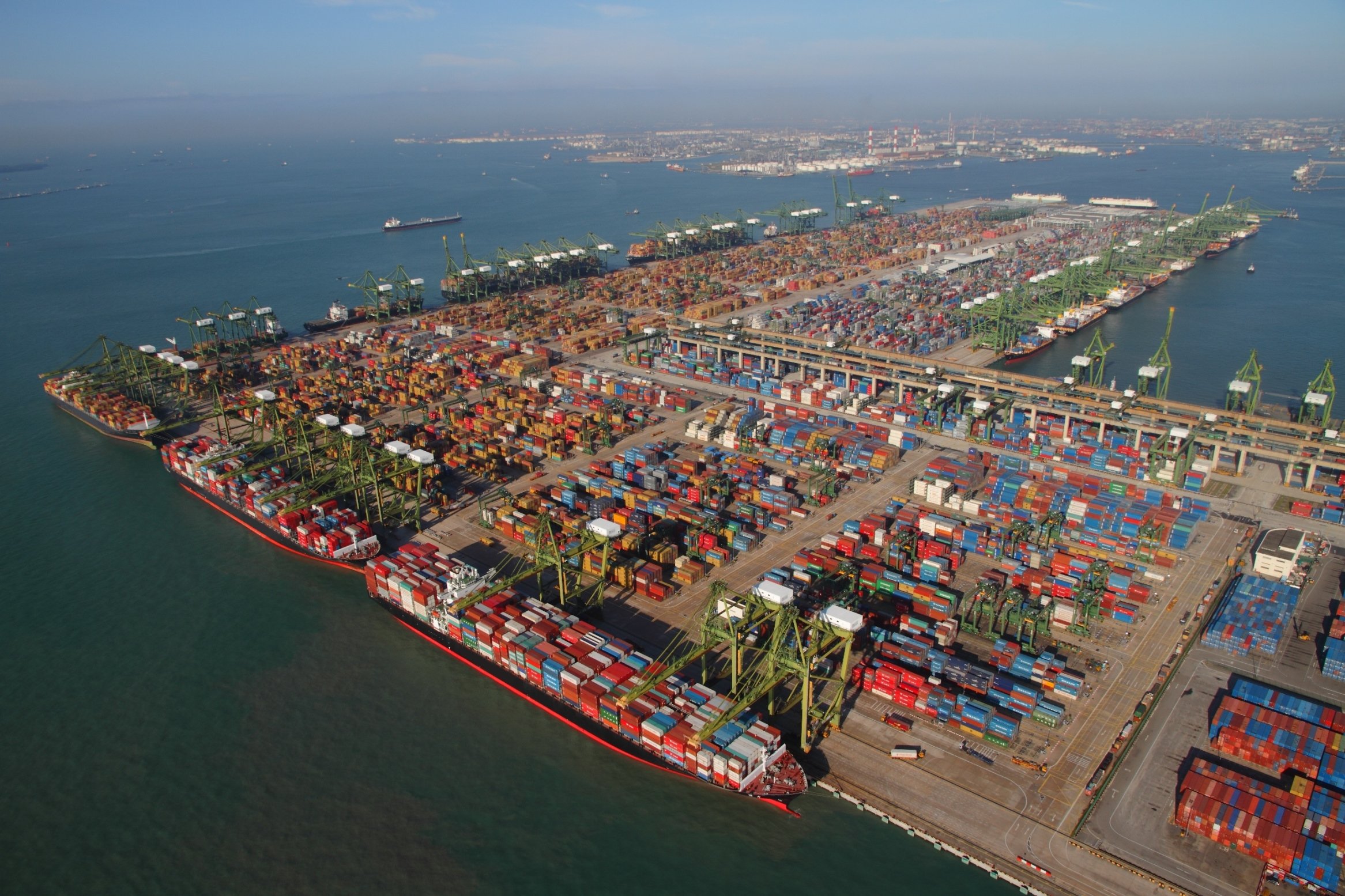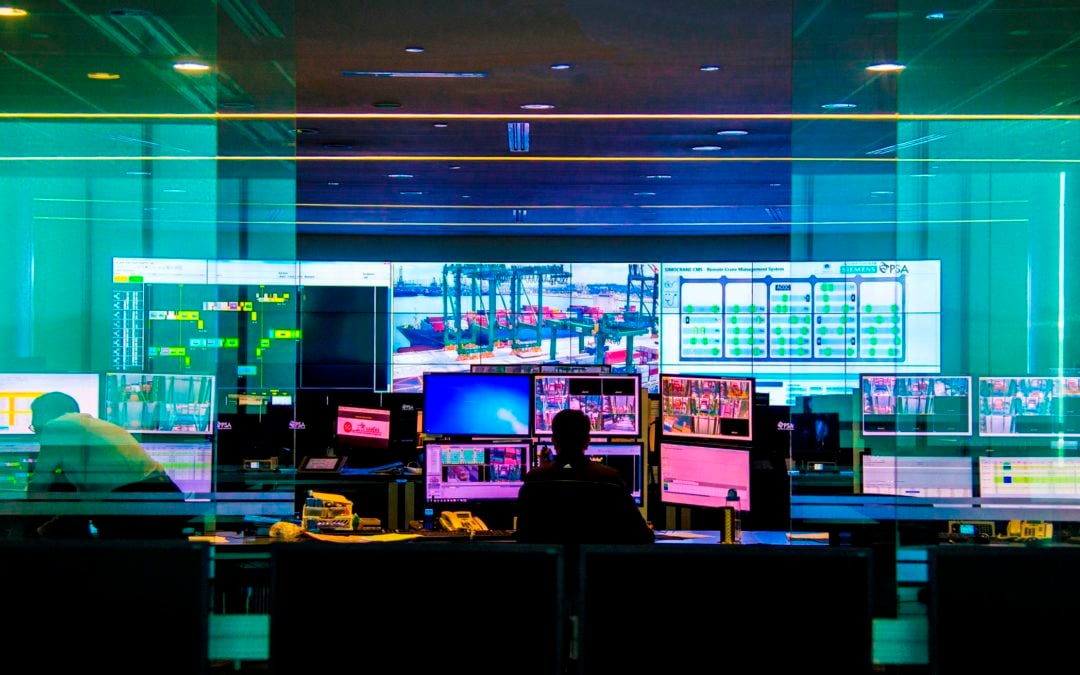Siemens has provided PSA Singapore with fully automated gantry cranes to help the busiest transshipment hub in the world handle a growing business with growing container ship sizes.
As a nation of just 5.5 million people, Singapore is understandably not a large consumer of goods. And the small island has very little in the way of natural resources that can be exported out to other countries. And yet Singapore is home to the largest transshipment hub in the world—bringing goods into its port to be shuffled and shipped back out to other destinations.

Handling more than 30 million TEUs (20 ft equivalent units) a year, PSA Singapore—seven terminals operating as one integrated facility—is connected to some 600 other ports, with daily sailings to every major port in the world. Keeping up with the world’s demands for goods is no easy task, and as the scale of the operations increase, the complexity grows exponentially, each vessel having a relationship to about 300 other vessels.
The port therefore relies heavily on automation. Like other industries within the manufacturing sector, shipping has been touched by digitalization. That goes for the cranes that load and offload containers from ships and trucks.
Siemens has been in the crane business for almost 70 years—not building the metal structure of the crane, but providing the electrical system and intelligence behind it. About 5,500 container cranes worldwide in operation are driven by Siemens.
According to Automation World, several motors and drives move hundreds of tons according to an array of key parameters: skew control, sway control, ship profiling, collision prevention, remote control, stack profiling, crane management system, truck positioning, auto landing, optimum path, stack positioning, and container number recognition. Combining all these control modules into advanced automation software has brought Siemens to the next step: replacing the crane drivers with a fully automated terminal.

At Terminal 3 of the Pasir Panjang location, Siemens has supplied PSA with the electrical and automation systems for 56 fully automated rail-mounted gantry cranes. These cranes—as tall as a 12-story building—can stack containers about 20 high. Operators look on from a bank of workstations in a centralized control room, but only jump in when needed, each responsible for up to five of the cranes at a time. At any given time, about 80 percent of the containers go through the process completely untouched by human operators.
“If you have an automated crane, the idea is that the automation works as good as the manually operated crane,” said Christian Kögl, senior vice president of Siemens’ crane business, in a briefing of industry press last week at Siemens Singapore. “It’s not as complex as a driverless car, but it’s similar. We can move more than 30 containers per hour. If you look at other terminals around the world, you will hardly find such fast operation.”
In fact, the automated crane is often more efficient and operates more safely than a human operator. For example, rather than having to routinely bring a container to the crane’s maximum height to make sure it clears an existing stack, the automated crane can operate more precisely, on a more optimal path. “It’s increased productivity by more than 10 percent, plus made it safer,” Kögl said. “It wouldn’t be possible without digitalization of the whole crane.”
Big Data is becoming a bigger part of the picture, Kögl added, including interlinking information from all the cranes through several terminals. And the digital twin that we have begun to hear of in manufacturing—a virtual version of equipment that can provide a simulated model for commissioning and maintenance purposes—has become a part of shipping crane operation as well.
The crane’s digital twin consists of three main parts: a block management system uses simulation to show a customer how productive his container stack will be; modular automation is mainly for commissioning, to test out the performance of a crane before shipping; and a virtual model of the crane explores the physics, including how the crane is actually moving, how the metal expands or contracts in changing temperatures, how it bends with the weight of the container, etc.
This move to digitalization is becoming ever more important in light of mega vessels and mega alliances. The container business began around the 1960s, and has been growing rapidly ever since. It has an average annual growth rate of about 10 percent. Not only is the number of ships coming into port on the rise, but the size of the ships as well. Emerging onto the scene in the past couple years have been mega ships—which can carry a staggering 20,000 TEUs or more. Instead of the 25 m long vessels launched in 1959, mega vessels can measure 400 m in length. They’re wider and deeper too, of course—bigger than aircraft carriers.
This might be great for the shipping companies, which can reduce cost per container by running larger container ships, but for a harbor operator, productivity will go down if nothing is done about it. “The harbor operator really has a challenge and has to increase productivity,” Kögl said.
The smaller ships, meanwhile, are not being scrapped, but just moved to serve other markets, thereby boosting the number of ships out on the waters and creating a potential crippling effect on the ports.
The mega alliance is another trend that affects productivity. The top 16 shipping companies have now created four mega alliances, increasing the complexity of the vessel relationships for the port operator.
Efficiency is paramount. For a typical vessel bringing 20,000 containers into port, it might be offloading 5,000-6,000 of those. That needs to happen within about 30 hours, Kögl said.
Singapore might not have much in the way of resources, but what it does do, it does smart—smart industries, smart infrastructure, smart cities. Manufacturing still makes up about 20 percent of the country’s GDP. “This is deliberate, and we plan to keep it at 20-25 percent,” says Fong Pin Fen, director of the Cities, Infrastructure and Industrial Solutions Group for Singapore’s Economic Development Board, who adds that 40 percent of its global exports are considered high-tech. “We see automation and digitalization as key ways to advance as a manufacturing hub.”
By




